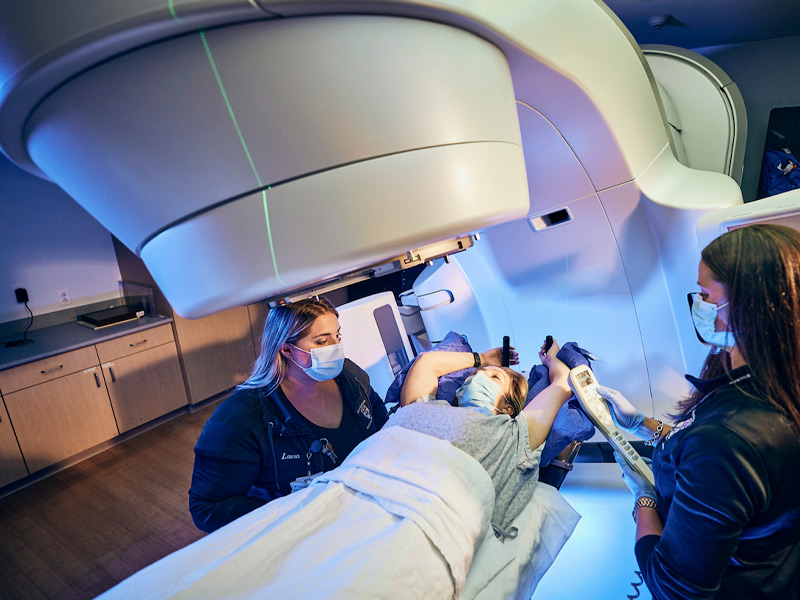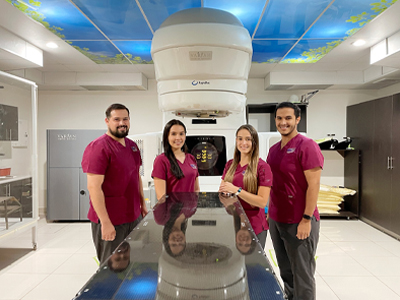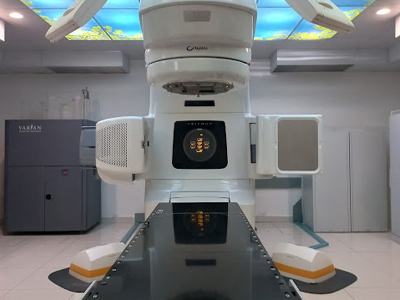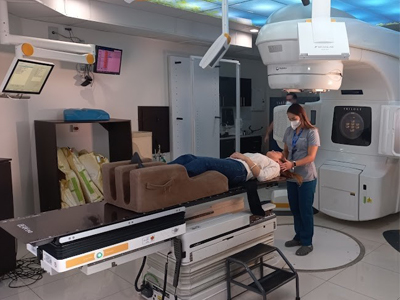Cervix Cancer

What is Cervix cancer?
He cervical cancer It begins when healthy cells on its surface begin to divide uncontrollably. These changes cause anomalies, not necessarily cancerous. These are the first steps that can lead to the formation of cancer.
Cervical cancer, or cervix, is among the most frequent in the female population worldwide, and according to statistics from the World Cancer Report 2014, it has fourth place in incidence and mortality. It is estimated that in 2018 some 570,000 new cases, representing 6.6% of cancers in women and a total of 311,365 deaths were recorded, with the populations of less developed regions, included in this group Central America and the Caribbean, being the most affected.
Its incidence among women aged 20-54 years, in Latin America, is 1: 1000 women per year. Costa Rica has an incidence of 20.2/1 00,000 women, which places us among the intermediate risk countries. In Costa Rica, in 2014, cervical cancer ranked third in incidence, being most common in the provinces of San José, Alajuela and Heredia, and fourth in mortality in 2015, with Cartago and Alajuela being the most affected provinces. according to the National Tumor Registry (RNT) and the National Institute of Statistics and Censuses (INEC).
RISK FACTOR'S
Factors that may affect breast cancer risk include:

As with other chronic diseases, cervical cancer incidence and mortality rates increase with age, yet the greatest absolute burden of cervical cancer falls on middle-aged women. Cervical cancer represents one of the few common cancers for which a specific causative agent has been identified.
Chronic HPV infection is the underlying cause in more than 99% of cervical cancer cases. In addition to HPV-16 and HPV-18, recent international studies have expanded the list of oncogenic viruses to include types 31, 33, 35, 45, 51, 52, 58 and 59. Globally, there have been the prevalence of HPV in 99.7 percent of cervical carcinomas, and oncogenic types 16 and 18 are those most frequently detected. All those related to the acquisition of the infection are considered risk factors.
There are other cancers related to chronic HPV infection such as cancer of the vulva (46%), vagina (70%), anal (88%), penis (50%) and oropharynx (26-50% depending on the geographic region).
HPV is the most common sexually transmitted infection and the majority of the sexually active population comes into contact with the virus throughout their lives. The infection is asymptomatic so many of those infected are unaware of it and therefore can transmit it. Up to 90% of HPV infections are cleared without treatment during the first two years and only those that become chronic can give rise to precancerous lesions that progress to invasive cancer.
Environmental agents such as tobacco smoke, hormonal contraceptives, diet, and various infectious microorganisms have been evaluated as possible cofactors of HPV in cervical carcinogenesis. Well-controlled epidemiological studies have shown that patients with HPV-positive cervical cancer are twice as likely to have been smokers as HPV-positive controls. Additionally, some recent studies in HPV-positive women have indicated that the risk of cervical cancer is higher in women who have used oral contraceptives for more than 10 years.
- Early age of initiation of sexual relations
- Sexual promiscuity or high-risk partners
- Immunosuppression (transplant patients, patients with autoimmune diseases being treated with steroids, HIV, etc…)
- History of coinfection with a sexually transmitted disease.
- Use of the contraceptive pill, because it is usually associated with not using barrier methods.
- Lack of adherence to the population screening program
- Smoking doubles their risk compared to non-smokers.
- Multiparity and first pregnancy at a young age
- Type of HPV infection, due to the oncogenic potential of each subtype.

In the earliest stages the disease is frequently asymptomatic. The earliest symptoms include:
SYMPTOMS: Abnormal genital bleeding (irregular/intermittent), Bleeding after sexual intercourse (coitorrhagia) or during gynecological examination, Smelly discharge, is very nonspecific, but may be indicative of vaginitis or cervicitis, Pelvic or lower back pain, Discomfort when urinating (dysuria) or Rectal tenesmus, Gynecological bleeding after menopause, Pain during sexual relations (dyspareunia).
DIAGNOSIS: Cytology using the Papanicolaou technique has a low sensitivity for the diagnosis of high-grade lesions, but it compensates with a high specificity. The combination of molecular detection of human papillomavirus (HPV) and cytology reaches a sensitivity to detect these lesions of up to 96%. In a vaccination scenario like the one being implemented for this pathology.
The Pap test has reduced the incidence rate of cervical cancer by 60%-90% and the mortality rate by 90%. More recently, an HPV DNA detection test has been introduced that has greater sensitivity for high-grade CIN than the Pap test and has been shown to provide greater protection against invasive cancer compared to the Pap smear. with the latter.
DIAGNOSTIC TOOLS
Physical and gynecological examination: A visual examination of the cervix is performed with a speculum. Those lesions visible with this technique include ulcerations, exophytic tumors in the ectocervix, and infiltration of the endocervix.
Cervical cytology (Pap smear): It is the main population screening method. Identify abnormal cells. Low sensitivity but high specificity.
HPV Test: Test with high sensitivity and specificity.
Colposcopy: It is performed when any of the screening tests are positive or if there is clinical suspicion. It allows us to see the morphology of suspicious lesions in greater detail and take biopsies at the same time.
Cervical biopsy: It consists of taking a small fragment of the suspicious lesion to corroborate the suspected diagnosis.
Image tests:
– Chest x-ray.
– Cystoscopy and/or rectosigmoidoscopy: It consists of performing a direct visualization of the bladder and rectum respectively in case of suspicion of infiltration by the tumor.
– Urography: allows evaluation of the urinary tract in the event of suspicion of locally advanced disease.
– Transvaginal Ultrasound.
– Computed Tomography (CT): It can be used instead of chest x-ray and urography for staging and is also useful for assessing lymph node involvement.
– Magnetic resonance: very useful test for local staging of the disease by determining tumor size, invasion of adjacent tissues and lymph node involvement.
Positron emission tomography (PET): This nuclear medicine imaging test uses a small amount of radioactive material to help determine how much cervical cancer has spread.

Treatment depends on the diagnosis, the size, location and stage of the tumor, as well as your general health and physical condition. Depending on the extent of the cancer and risk assessment, treatment may consist of one or more therapies:
SURGERY: The conventional schedule for delivering radiation to the whole breast is 5 days a week (Monday through Friday) for 6 to 7 weeks. Another option is hypofractionated radiation therapy in which radiation is also given to the entire breast, but in higher daily doses (Monday through Friday) using fewer treatments (usually for only 3 to 4 weeks).
RADIOTHERAPY: Radiation therapy may be given after surgery or instead of surgery, and is the treatment of choice during any stage of the disease, except for the earliest stages. It is also used to treat some patients with locally advanced cervical cancer and can also be used to treat some symptoms of metastatic disease, as neoadjuvant or adjuvant therapy depending on the case. It is a treatment that is administered on an outpatient basis 5 days a week, for approximately 5 weeks. Administration of the radiotherapy treatment lasts a few minutes, and is not painful.
Currently, there are very sophisticated advanced treatment techniques with external radiotherapy that allow high doses of radiation to be administered to the treatment area, minimizing the radiation dose to the healthy organs surrounding the tumor and demonstrating that the overall survival and the disease-free period In this type of pathology, the application of these techniques is favored.
Currently the 21st Century Radiotherapy Clinic It has these technologies and the experience to treat this type of pathologies, guaranteeing the protection of surrounding organs and tissues, with a reduction in toxicities at the level of the urinary tract and the gastrointestinal tract, thus providing a greater quality of life for the patient. These techniques are:
* IMRT (intensity modulated radiotherapy): Allows the RT dose and intensity to be varied during therapy. It is a technology through a computerized system that allows precise radiation doses to be delivered to a tumor or specific areas within a tumor and reduce doses to healthy tissues.
* VMAT (Volumetric Arcotherapy): This technique uses a computer-controlled machine that moves around the patient as it emits radiation and significantly shortens irradiation times, contributing to further increasing the safety of the treatment and improving patient comfort.
* IGRT: Allows the delivery of higher doses of radiotherapy by utilizing advanced imaging techniques such as magnetic resonance imaging with spectroscopy or an integrated imaging scanner. This advancement allows the doctor to take photographs of the area just before administering radiation to make minor adjustments to the direction of the rays, helping to deliver the radiation even more precisely.
CHEMOTHERAPY: The use of radiotherapy as part of the treatment of rectal malignancies is increasingly widespread. In locally advanced primary rectal cancer, several studies have demonstrated its effectiveness, with a decrease in local recurrence and an increase in disease-free survival, both in its preoperative and postoperative administration. Emerging developments such as intensity-modulated radiation therapy (IMRT), image-guided radiation therapy (IGRT), and stereotactic radiation therapy (SBRT) are being evaluated. These techniques offer the possibility of providing greater radiotherapy without involving normal or healthy tissue.




